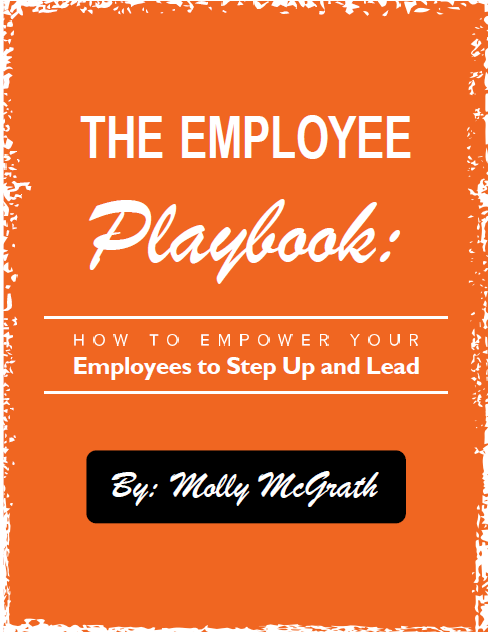One of the m ost common requests we get from bosses is for our help in getting their team to receive constructive criticism. They want their employees to receive their feedback, learn from their mistakes, and incorporate the learning into future work so they aren’t making the same mistake multiple times. Instead, the bosses are getting deer-in-the-headlights looks, tears, and shutdown.
ost common requests we get from bosses is for our help in getting their team to receive constructive criticism. They want their employees to receive their feedback, learn from their mistakes, and incorporate the learning into future work so they aren’t making the same mistake multiple times. Instead, the bosses are getting deer-in-the-headlights looks, tears, and shutdown.
The first problem we often see is, well, you aren’t giving her constructive criticism, you are ripping her head off!!!
So how do you get your team to take constructive criticism? You can’t. Constructive criticism is another term we’ve added to our “delete from the dictionary” list (along with delegation and multi-tasking). They are words that are not only overused and generalized – allowing people to apply them to pretty much anything, including a ton of bad habits – but even in their true definition, they are completely undesirable. Even worse, they are confidence-sucking, energy-depleting, often insulting terms to use with your employee or boss.
Delegation = I’m dumping stuff on you that isn’t worth my time. What you want to do is design roles for each person on your team, with the proper tasks that are the best use of their unique talents and that allow workflow to be effective and profitable.
Multi-tasking = Hey boss, I’m answering the phone while proofing letters to clients and signing for an urgent FedEx. Is it any wonder that the phone message disappeared, the letters had typos and the package is sitting on the floor under my desk still? What you want is a team member who can prioritize under pressure and then get focused back on task quickly.
We learned this about constructive criticism from two employee/boss conversations in the same week. In the first, we were part of a call in which we heard a frustrated employee telling her boss how horribly his lack of follow through was harming her. His constant habit of getting documents to her to finalize within an hour of the client meeting was stressing her to no end and ultimately causing errors. Her intentions were completely in the right place – she was primarily concerned with making a mistake that might harm a client and the company’s reputation, followed by the real frustration that she was operating in a constant state of stress and worry. However, after five minutes of her listing examples of cases and the mistakes he made, and the bad result that occurred, we finally jumped in to halt the torture. Her boss was agreeing and felt horrible, making promises to do better, but he doesn’t know how to fix the problem. If he could, he would! Criticizing his lack of getting things reviewed on time isn’t constructive. He knows it already – and he hates it too! He just doesn’t know how to fix it. Instead, let’s look at our process and how we can tweak it to solve the problem. (This can be hard to see when you are “in the trees,” but it’s doable, I promise.)
In the second conversation, we were supporting a boss/employee with the employee’s annual review. He immediately dived into a 12-point list of things she needed to improve on and repeatedly kept saying that the most important one was “receiving constructive criticism.” The list didn’t really contain areas to improve upon, it was a laundry list of mistakes she had made. Umm, what’s constructive about that??? She certainly didn’t mean to make the mistakes, they were either because she was doing things she didn’t understand or was rushing because she had so much to do. And realistically, she was so busy double-checking herself, paranoid to make “another” mistake, that she was making even more. How is this constructive? This requires training and perhaps some double-check systems for her to use when she is super busy.
Constructive criticism is usually also very piecemeal – it’s not a collective explanation of what needs to be corrected and why. It’s very reactive, not proactive.
Criticizing someone is never a good technique and isn’t going to get you the result you want. At best, it rolls off the back of a thick-skinned person – but is that fixing the problem? And if your criticism gets shrugged off, what else are you saying that doesn’t sink in?
Rather than simply labeling something constructive criticism, try to identify whether the problem is:
1. A systems or process issue
2. A training issue
3. A double-check issue (simple errors – but look at why, under what conditions and how to have a double-check system to prevent them)
Then schedule an appropriate time to create/fix the system, train the employee or establish a double-check system. And keep in mind, the person probably doesn’t know HOW to fix or learn this, otherwise there wouldn’t be a problem in the first place. Figuring out what will fix it will move the employee past it and remove it as a problem in your company.
If you need help identifying areas to work on systems, training or a double-check system for your employees, versus the old-fashioned constructive criticism approach, consider our Employee Evaluation Package™. It includes all the forms to prepare for, conduct and follow up with an employee evaluation (which we now call an Employee Growth Path™ Meeting), along with a 1-hour phone call to help you prepare and a 30-minute phone call afterwards to debrief. Contact us at info@yeschick.com.
By
Laney Lyons-Richardson

